|
|
| |
|
|
| |
|
|
|
|
| |
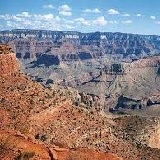 Travel
America Travel
America
Learn before you travel. This section of Fun Easy
English focuses on facts and other cool stuff about
your favorite U.S. state. This is great English
reading practice. This page focuses on the state of
Virginia. |
 Hey
if you cannot understand something on this page, Hey
if you cannot understand something on this page,
then use the Fun Easy English
dictionary
(opens in a new window) |
|
|
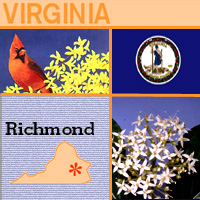 Virginia Virginia
The Virginia Company founded the first permanent
English colony at Jamestown in 1607. One of the
original 13 states (it entered the Union in 1788),
Virginia was named for Elizabeth I, the Virgin Queen
of England. Virginia holds an important place in
American history, as it was home to many of the
founding fathers, including George Washington,
Thomas Jefferson, James Madison, George Mason, and
Patrick Henry. Four of America's first five
presidents were Virginians. During the Civil War,
Richmond, Virginia's capital, was the capital of the
Confederacy. Today, Virginia is a popular tourist
spot where people can visit historic places such as
Alexandria, Williamsburg, and Mount Vernon, George
Washington's estate. Dogwood is the state flower and
the cardinal is the state bird of the "Old
Dominion." |
|
Virginia
State Flag
The state flag of Virginia has a deep blue field
with a circle of white in the center on both sides of the
flag. In this white circle Virginia's coat of arms is
painted or embroidered, as described by the convention of
1776 (also the description of Virginia's state seal):
"Virtus, the genius of the commonwealth, dressed like an
Amazon, resting on a spear with one hand, and holding a
sword in other, and treading on tyranny, represented by a
man prostrate, a crown fallen from his head, a broken chain
in his left hand and a scourge in his right. In the exergon
the word Virginia over the head of Virtus, and underneath
the words "Sic Semper Tyrannis." |
|
Source:
State Symbols USA |
|
|
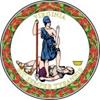 Virginia
State Facts Virginia
State Facts
Picture: state seal of Virginia |
|
State Capital |
Richmond |
|
Nickname |
Old Dominion |
|
Motto |
Sic Semper Tyrannis (Thus Always to Tyrants) |
|
Statehood |
June 25, 1788 (10th) |
|
Origin of Name |
Named for England's "Virgin Queen," Elizabeth I |
|
Largest Cities |
Virginia Beach, Norfolk, Richmond, Chesapeake,
Newport News |
|
Border States |
Kentucky, Maryland, North Carolina, Tennessee, West
Virginia |
|
Area |
39,598 sq. mi., 37th largest |
|
State Bird |
Cardinal |
|
State Flower |
Dogwood (cornus florida) |
|
State Tree |
Dogwood (cornus florida) |
|
State Song |
None |
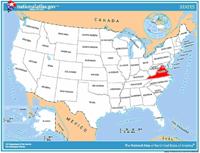 Travel
and tourism site for Virginia - This state travel and
territorial tourism site provides ideas for your vacations,
meetings, and more. Travel
and tourism site for Virginia - This state travel and
territorial tourism site provides ideas for your vacations,
meetings, and more. |
|
|
Virginia Stories |
|
|
Fiddler Henry Reed of Virginia
Have you ever heard traditional fiddle music? One well-known
fiddler, Henry Reed, grew up in Glen Lyn, Virginia. Reed was born in
1884 and grew up in a musical family. He spent most of his life
performing fiddle tunes that bring to mind the history of the
state's Appalachian frontier. Reed learned an amazing number of
tunes, most of them by ear. He knew a wide variety of melodies, such
as those from the early American frontier, waltzes, popular tunes
from the turn of the 20th century, and 19th century marches.
The style of Henry Reed's fiddle playing, like the style of other
older fiddlers in the South, is a combination of different
influences. For instance, the rhythms he used came from both
European and African American influences. American Indian music may
also have made an impact on the method of playing that Reed learned
so many years ago.
During the mid-1960s, folklorist Alan Jabbour recorded Henry Reed
performing fiddle tunes. Many of the traditional tunes Reed played
became popular again during the fiddling revival of the later 20th
century. |
|
|
Lancaster Toy and Train Collection at the
Children's Museum of Virginia
What could be more fun than a museum full of toys?
A.J. "Junie" Lancaster and his wife, Mildred, had a sizable toy and
train collection, which they wanted to share with others. So they
donated it to the Children's Museum of Virginia in Portsmouth. The
collection contains more than 2,000 toys and trains worth about $1
million! Now, young and old can enjoy Tonka toys, model cars, Buddy
L trucks, fire trucks, and tin windup and cast iron toys. The
collection also includes circus toys -- circus tents filled with
colorful circus figures, trapeze artists, and circus wagons.
The majority of the collection, however, is dedicated to model
trains. All types of trains -- Lionel, Williams, and Weaver in many
different sizes -- are on display. Visitors can pop their heads up
into a clear dome and get a 360-degree look at the trains as they
chug around the exhibit area. They can even work the trains'
controls.
Visitors also learn about railroad safety, the fun of model
railroading and collecting, the history of railroads, and the
railroads' importance to the development of the United States. |
|
|
Independence Day Celebration and
Naturalization Ceremony at Thomas Jefferson's Monticello
Every year on the Fourth of July, people from many different
countries come to Monticello, Thomas Jefferson's home, to become
United States citizens. The process of becoming a U.S. citizen is
called naturalization. After living in the U.S. for a certain number
of years, an immigrant can apply for citizenship by petitioning for
naturalization.
Thomas J. Michie, Judge of the U.S. District Court of Western
Virginia, began the Independence Day naturalization ceremonies at
Monticello in 1963. The ceremony opens with a concert of patriotic
American music. The petitioners for naturalization, their family,
friends, and guests are welcomed; an invited guest reads the
beginning of the Declaration of Independence; and a guest speaker
delivers remarks before the new citizens take an oath. After the
formal proceedings, the day ends with a Fourth of July picnic.
In 2000, the ceremonies were especially significant. The guest
speaker was Madeleine K. Albright, the secretary of state at the
time. She is not only the first female secretary of state, but also
an immigrant. Albright followed in the footsteps of Thomas Jefferson
who served as the first Secretary of State, in 1790-1793. |
|
|
Pony Swim and Auction
Can you guess how a herd of wild ponies arrived at Assateague
Island, Virginia, and how their offspring have continued to live
there for more than 300 years?
No one knows how the "ponies" got on the island, but one myth says
that they are descendants of mustangs that swam there from a
shipwrecked Spanish galleon (a large sailing ship). The most likely
explanation is that they are the descendants of horses that were
brought to the island in the late 17th century by owners on the U.S.
mainland who wanted to avoid taxes and laws requiring them to be
fenced. Although they are called "ponies," they are actually horses.
Their diet of grasses and seaweed and the harsh environment prevent
them from growing to full size, which makes them look more like
ponies.
Today, the ponies are split into two main herds -- one on the
Virginia side and one on the Maryland side of the Chincoteague
National Wildlife Refuge on Assateague Island -- and each herd has
about 150 animals. |
|
|
Fort Lee and the Legacy of Army Women
The new U.S. Army Women's Museum at Fort Lee, Virginia, honors the
women who have served in the U.S. Army.
During World War I, when Fort Lee was called Camp Lee, many women
served there as nurses. During World War II, the Women's Army
Auxiliary Corps (WAAC) was established. That name was soon changed
to the Women's Army Corps (WAC). In the beginning, the WAC was
considered a temporary unit that would be broken up when World War
II ended, but that didn't happen. Instead, the WAC Training Center
was established at Camp Lee in 1948 and women trained there before
moving on to their permanent Army assignments.
Women have served in the military since the beginning of our nation.
During the Revolutionary War, Mary McCauley, better known as "Molly
Pitcher," carried water to cool both the cannons and the soldiers in
her husband's regiment. During the Civil War, Harriet Tubman (an
escaped slave) worked as a nurse and spy for Union forces and led
the Union Army on a raid that resulted in freedom for more than 750
slaves. During World War II, Jacqueline Cochran was the first woman
to fly a heavy bomber over the Atlantic. She also trained American
women as transport pilots in England for the Air Transport Auxiliary
of the Royal Air Force. She was awarded the Distinguished Service
Medal in 1945 for her service in World War II.
The U.S. Army Women's Museum at Fort Lee highlights the bravery of
these women and many others who have served in our country's forces. |
|
|
Torpedo Factory Art Center
What can you do with an old torpedo factory? In Alexandria,
Virginia, on the banks of the Potomac River, a torpedo factory was
turned into an arts center -- the Torpedo Factory Art Center.
The factory was built after the end of the First World War, in 1918.
For the next five years submarine and aircraft torpedoes (missiles)
were produced there around the clock. After that, the building was a
storage area for arms and ammunition until World War II. After the
war it was used by the Smithsonian Institution to store art objects
and valuable dinosaur bones. Congress also stored documents there,
and the military used it to store German war films and records.
The city of Alexandria bought the factory from the federal
government in 1969, but it wasn't until 1974 that artists converted
the huge space into a complex of bright, clean studios. Today, you
can visit the Torpedo Factory and see artists at work -- a potter
making a bowl, an artist making a stained glass window, or a painter
working on a canvas.
You can also learn about torpedoes. The torpedo in the picture is on
display in the main hall. It was made at the factory in 1945 and was
painted bright green so that the Navy could see it in the water when
it was tested. |
|
|
Virginia Beach Neptune Festival
Have you ever made a sand castle? What about a sand sculpture?
At the North American Sand Sculpting Championship, sand sculpturing
is an art form. The Virginia Beach Neptune Festival, which includes
the Sand Sculpting Championship, was named after Neptune, the Roman
god of the sea. You can go to this 10-day festival and participate
in sporting competitions, arts and crafts, King Neptune's Grand
Parade, and, of course, the sand competition.
Both professionals and amateurs come to the Neptune Festival to
compete in the sand sculpting competition. They start by using water
to hold the sand together. Buckets, shovels, sprayers, wheelbarrows,
ladders, and garden tools help make the sand sculptures. Cake
cutters, pallet knives, spoons, and even melon-ballers are also
used. Natural seashore items such as shells and seaweed are used for
decorations. When the sculpture is finished you should take a photo
of your masterpiece because, before you know it, it will all be
washed away. |
|
Source:
Library of Congress |
|
 National
Forests, Parks, and Monuments of Virginia National
Forests, Parks, and Monuments of Virginia
The following is a description of national
forests, parks, and monuments in the state
of Virginia. If you plan to visit or live in
Virginia for awhile then you should
definitely plan to visit some of these
fantastic places. |
|
|
|
National Forests |
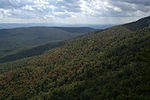 George
Washington & Jefferson George
Washington & Jefferson
In the Appalachian Mountains, the highest
point of the forest is Mount Rogers, also
the highest point in Virginia at 5,729 ft
(1,746 m) in Mount Rogers National
Recreation Area. There are 230,000 acres
(93,000 ha) of old-growth forest here, and
the Blue Ridge Parkway and Appalachian Trail
both run through the forest. This national
forest is also partially located in the
states of Kentucky and West Virginia. |
|
|
|
National Parks |
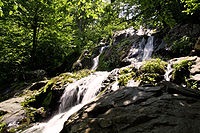 Shenandoah Shenandoah
Shenandoah's Blue Ridge Mountains are
covered by hardwood forests that teem with a
wide variety of wildlife. The Skyline Drive
and Appalachian Trail run the entire length
of this narrow park, along with more than
500 miles (800 km) of hiking trails passing
scenic overlooks and cataracts of the
Shenandoah River. |
|
|
|
National Monuments |
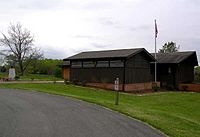 Booker
T. Washington Booker
T. Washington
The Booker T. Washington National Monument
preserves portions of the 207-acre (0.84
km2) tobacco farm on which educator and
civil rights leader Booker T. Washington was
born into slavery on April 5, 1856. The site
contains replicas of the house Washington
was born in, a smokehouse, a blacksmith
shed, a tobacco barn, and a horse barn. |
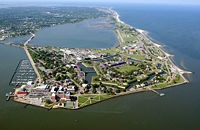 Fort
Monroe Fort
Monroe
Fort Monroe National Monument spans the
American story from the 17th to the 21st
centuries: Captain John Smith's journeys, a
haven of freedom for the enslaved during the
Civil War, and a bastion of defense for the
Chesapeake Bay. |
 George
Washington Birthplace George
Washington Birthplace
Representative of 18th-century Virginia
tobacco farms, this site is the birthplace
and boyhood environment of George
Washington. The entrance includes a Memorial
Shaft obelisk of Vermont marble that is a
one-tenth scale replica of the Washington
Monument in Washington, D.C. Also within the
monument are the historic birthplace home
area, a kitchen house, and the Washington
family burial ground. |
|
|
|
|
|
|
|
|
|
|
|
|
Cool America |
 About the U.S.A. About the U.S.A.
About the U.S.A. is an American
Studies reader that examines the customs, government, and history of the
United States of America. The text provides a wealth of information on U.S.
geography and history; the roles of local, state, and federal government;
national holidays and symbols; the Constitution; and citizenship. The book,
which was written for intermediate to advanced learners of English, contains
a range of activities for language students to practice listening, speaking,
reading, and writing. (opens to a new PDF window)
Great English reading
practice. |
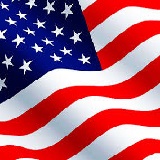 About
America About
America
Learn about the fascinating history and government of
the United States of America. Lessons include content on
American Government, American History, and Integrated
Civics. Handouts with interactive games and
student-centered activities encompass all four language
skills: speaking, listening, reading, and writing.
Great English reading practice for
beginning to intermediate students. |
 American Teens Talk! American Teens Talk!
Americans Teens Talk! is a collection of interviews of
American high school students. Each interview is accompanied by vocabulary
notes and discussion questions. The interviews in American Teens Talk! give
learners a view into the lives of adolescents in the U.S. Through the
written format of the interviews, learners are able to increase their
vocabulary, practice their reading and listening skills, engage in
discussions, and learn more about U.S. culture. These
interviews come with audio programs.
Great English listening and
reading |
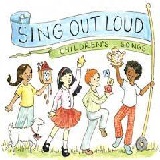 Sing Out Loud Children's Songs Sing Out Loud Children's Songs
Sing Out Loud Children's Songs includes popular children's songs in the U.S.A. Posters accompany the
individual Sing Out Loud Children's Songs. These
songs come with audio programs.
Great English listening and reading
practice. |
 Sing Out Loud Traditional Songs Sing Out Loud Traditional Songs
The Sing Out Loud Traditional Songs
collection contains 13 traditional American folk songs and song lyrics.
Listen to the songs online, read the lyrics, and collect the posters that
accompany the songs. These
songs come with audio programs.
Great English listening and reading
practice. |
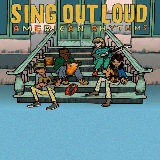 Sing Out Loud American Rhythms Sing Out Loud American Rhythms
Do you love music? Want to use it
to learn English? Check out the hip-hop inspired song "Peace" from Sing Out
Loud American Rhythms. American Rhythms includes a variety of musical genres
from many different artists in the U.S.A. These songs will appeal to teens
and young adults. These
songs come with audio programs.
Great English listening and reading
practice. |
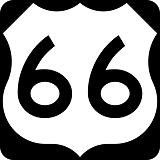 Route
66 - Famous American Road Route
66 - Famous American Road
U.S. Route 66 (US 66 or Route 66), also known as the Will Rogers Highway, the
Main Street of America or the Mother Road, was one of the original highways in
the U.S. Highway System. The highway, which became one of the most famous roads
in the United States, originally ran from Chicago, Illinois, through Missouri,
Kansas, Oklahoma, Texas, New Mexico, and Arizona before ending in Santa Monica,
California, near Los Angeles, covering a total of 2,448 miles (3,940 km). It was
recognized in popular culture by both the hit song "(Get Your Kicks on) Route
66" and the Route 66 television show in the 1960s. |
Route 66: The Highway That's the Best
(Beginner - Listening)
A video lesson which shows you an interesting place in America.
The English is
spoken at 75% of normal speed.
Great English listening practice.
This video shows travel along Route 66, the most famous road in
America. |
Chicago: The Start of Route 66
(Beginner - Listening)
A video lesson which shows you an interesting place in America.
The English is
spoken at 75% of normal speed.
Great English listening practice.
This video shows travel along Route 66, the most famous road in
America. |
Going West for Decades on Route 66
(Beginner - Listening)
A video lesson which shows you an interesting place in America.
The English is
spoken at 75% of normal speed.
Great English listening practice.
This video shows travel along Route 66, the most famous road in
America. |
Arizona: The Spirit of Route 66
(Beginner - Listening)
A video lesson which shows you an interesting place in America.
The English is
spoken at 75% of normal speed.
Great English listening practice.
This video shows travel along Route 66, the most famous road in
America. |
Route 66 California: The End of the Trail
(Beginner - Listening)
A video lesson which shows you an interesting place in America.
The English is
spoken at 75% of normal speed.
Great English listening practice.
This video shows travel along Route 66, the most famous road in
America. |
Ten Must-See Route 66 Attractions
(Beginner - Listening)
A video lesson which shows you an interesting place in America.
The English is
spoken at 75% of normal speed.
Great English listening practice.
This video shows travel along Route 66, the most famous road in
America. |
Four Famous Foods On Route 66
(Beginner - Listening)
A video lesson which shows you an interesting place in America.
The English is
spoken at 75% of normal speed.
Great English listening practice.
This video shows travel along Route 66, the most famous road in
America. |
International Tourists Drawn to Route 66
(Beginner - Listening)
A video lesson which shows you an interesting place in America.
The English is
spoken at 75% of normal speed.
Great English listening practice.
This video shows travel along Route 66, the most famous road in
America. |
|
|
|
|
Search Fun Easy English |
|
|
|
|
|
|
|
|
|
|
|
|
|
|
|
About
Contact
Copyright
Resources
Site Map |